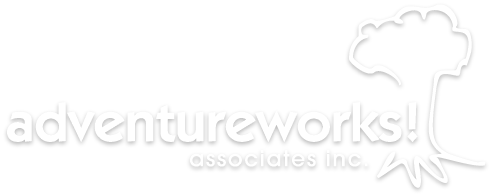How do the new ACCT Standards affect my organization?
/
By Kathy Haras, Ph.D.
Standards change from time to time as new information becomes available. The new 8th edition of the Association for Challenge Course Technology (ACCT) Standards was released in December and by now most ACCT members have received a copy of the navy book. Aside from having a new document for your risk management bookshelf, you may be wondering what this update means for you or why you should even care.
Standards change from time to time as new information becomes available. The new 8th edition of the Association for Challenge Course Technology (ACCT) Standards was released in December and by now most ACCT members have received a copy of the navy book. Aside from having a new document for your risk management bookshelf, you may be wondering what this update means for you or why you should even care.
In simplest terms, you may be required to comply with
changes. Compliance with ACCT standards may be required by government
regulations, be a condition of maintaining provincial camping accreditation, or be
deemed obligatory by your insurance company. Your clients and stakeholders may
want to be assured that your organization is up-to-date. Last, these changes
represent thoughtful modifications to common peer
practice developed based on feedback from the public comment period for the previous 7th Edition of the ACCT Standards. The intent of this blog is not to list and
explain all of the changes found in this new 8th edition (it’s too short for a job that big) but to help
you to understand what to look for when you read these standards or talk about
them with others. So what can you expect?
- Changes to your practice. You (or your senior staff) may be required to do new things or do things differently. For example, the new chapter on training standards now specifies that staff must undergo training delivered by a qualified trainer at least annually. In addition, the operations standards now require that staff members who work on the ropes course be assessed annually. Your organization may need to allocate additional time to people’s work schedules to complete these requirements.
- Changes to your administration and documentation. Some of the changes are minor and merely require a change to some of your administrative procedures. In the 8th edition pre-use checks need to be documented using a checklist (which you will need to create). Similarly, staff training must be documented. If your organization has not previously been documenting these (and other) events, you may need to create some new forms and administrative procedures.
- Changes to what others do. Aside from the installation and inspection standards now being combined into a single chapter called Design, Performance and Inspection, installers must now engage in a specific and documented commissioning process. As a client, you will be asked to sign before the course or element is turned over to you. You may also see installers engage in testing of critical anchors. Your installer may also provide you with documentation related to the design of your facility.
- Changes to terms and language. In order to improve clarity, what things are called have changed. “Belay” is the most obvious example. A lanyard-based personal safety system is no longer called a “static belay” for the simple reason that while it protects climbers from a fall, it is not in fact a belay and using this term would create confusion in the midst of the equipment standards. While changes in language seem minor, it is generally helpful if staff, vendors, and directors (and participants) use the same words to discuss the same things.
- Communicating that you meet the ACCT Standards. Clients may ask for proof of compliance with the 8th ed. of the ACCT standards. When communicating with your clients that you meet the ACCT standards, please keep in mind that this means that you meet the requirements of the Design, Performance, & Inspection; Operations; Training; and Certification standards. Demonstrating this compliance requires more than providing them with a copy of your professional inspection (previously know as the annual inspection) and may require you to write a letter verifying that you in fact meet all of the ACCT Standards.
The goal of standards change is improvement – in practices,
in clarity, and in risk management. Take this latest change in the ACCT
standards as an opportunity to improve your ropes course program. The new standards can be purchased directly from the ACCT. www.acctinfo.org


